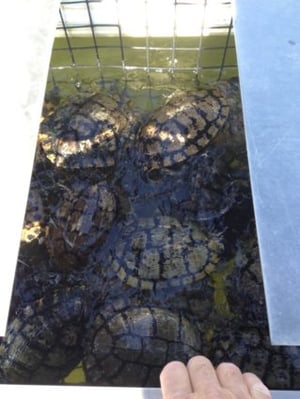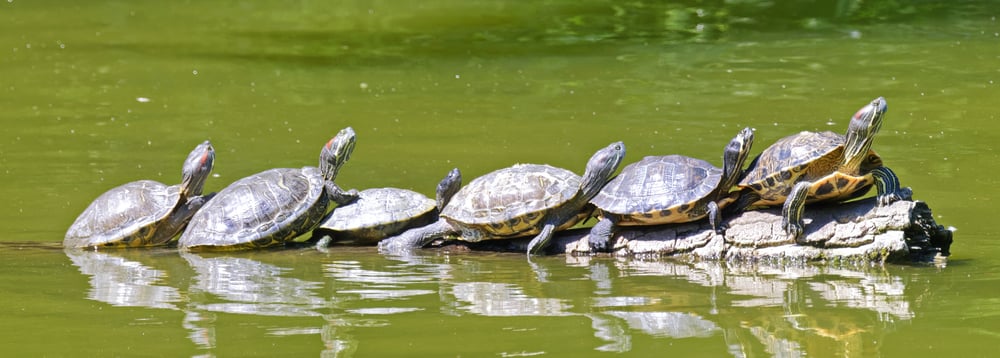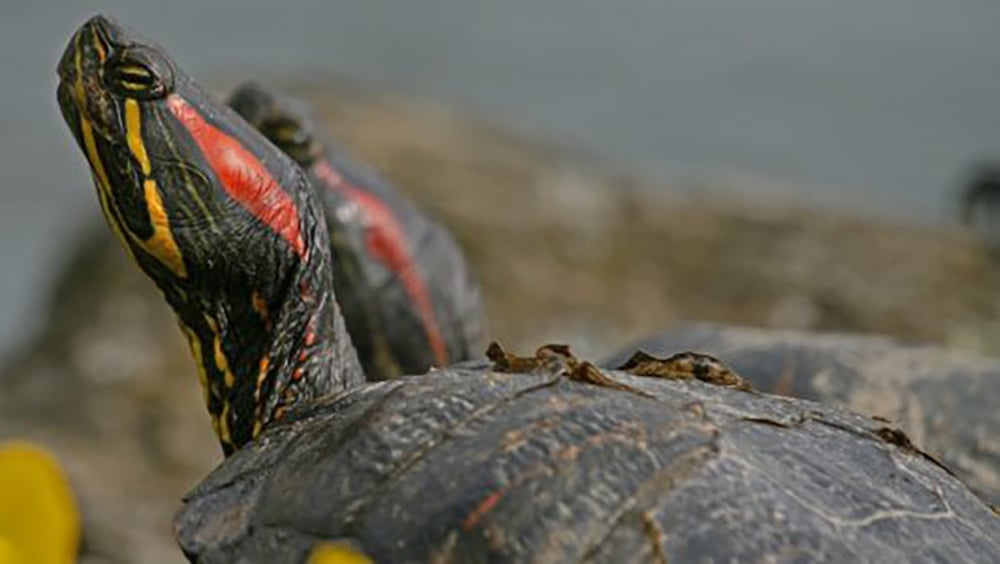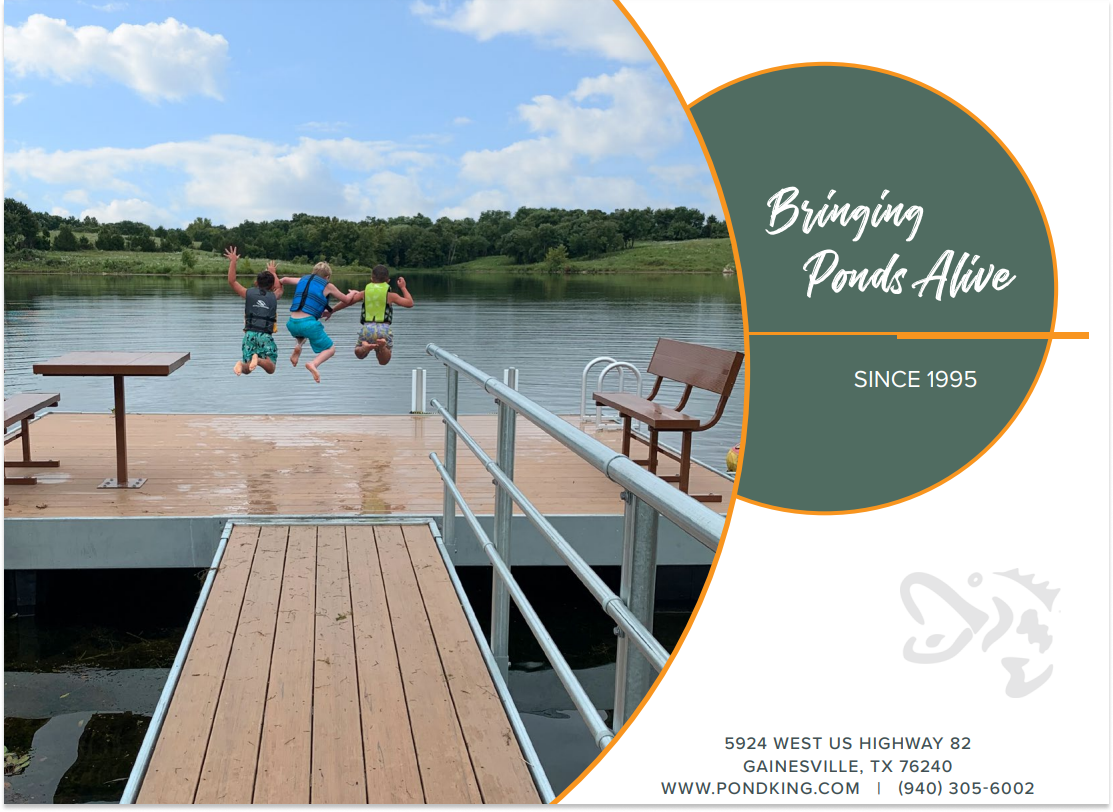Proper turtle trap placement can mean the difference between reducing your turtle population and wasting time and money. Basking turtles, such as red ear sliders, can be a nuisance for most backyard ponds.
They compete with your baitfish for the pelleted fish feed, as well as consume fish eggs and young fry. Most traps are designed to catch these types of turtles alive so they can be removed and relocated. If relocation is your goal, be sure to consult your local Game Warden. You don't want your turtle problem to become someone else's. Also, when handling turtles, either wear gloves or wash your hands really well when you're done because turtles are notorious for carrying salmonella.
How Many Turtles Do You Need to Catch?
 The size of the turtle population in your pond will determine how easy trapping will be. Trying to remove turtles in a small pond can prove to be a bit of a headache.
The size of the turtle population in your pond will determine how easy trapping will be. Trying to remove turtles in a small pond can prove to be a bit of a headache.
But you can place your trap almost anywhere on a pond with an overabundance of turtles and have success. As time goes by in this scenario, you'll have to reposition the trap more strategically to have continued trapping success.
To save yourself time and effort, it's usually best to set the trap correctly the first time and not worry about it again.
Factors That Influence Turtle Trap Placement
There are a few factors you should consider when determining the ideal placement of your turtle traps. Being able to access it to remove the turtles is an important consideration. If you don't have access to a boat or other means to set or empty the trap, you're limited to placing it by a dock or close to land. This can limit the effectiveness of the trap because it gives the animals access to easier, more familiar structure.
Ideally, you want the trap placed as far out in the pond as you can get it.
Are There a Lot of Other Basking Options?
Another consideration in identifying the ideal turtle trap placement for your pond is habitat. Are there already a lot of natural basking sites available to the turtles in your pond or lake? If you have a lot of logs, stumps, rocks, or islands that are above the surface of the water your trap will need to be placed away from these structures.

If you place the trap too close to natural basking locations, they'll draw some of the turtles away from the trap, reducing the trap's effectiveness.
Pond Size Impacts Turtle Trap Placement
The final factor in the proper placement of your turtle trap is the size of your pond. If you have a smaller pond, you may have to put the trap closer to the bank, just because the pond is so small. But this turtle trap placement actually makes it less desirable for the turtles to bask on.
However, if you have a large pond, you don't want to place the trap in the middle because that's usually one of the deepest parts of the pond. Most turtles don't typically journey to the deeper parts of the pond.
You Need to Access the Turtle Trap
Ideally, the turtle trap will be accessible to both you and the turtles. The trap should be someplace that doesn't have other structures for the turtles to climb out of the water and catch some sun.
Remember, Pond King turtle traps are designed for basking turtles and won't typically attract or trap other types of turtles, especially snapping turtles. If you have any other questions on turtle traps and their placement in your pond feel free to contact me at garrett@pondking.com.



